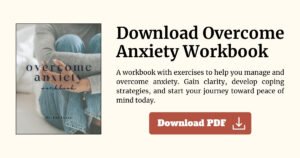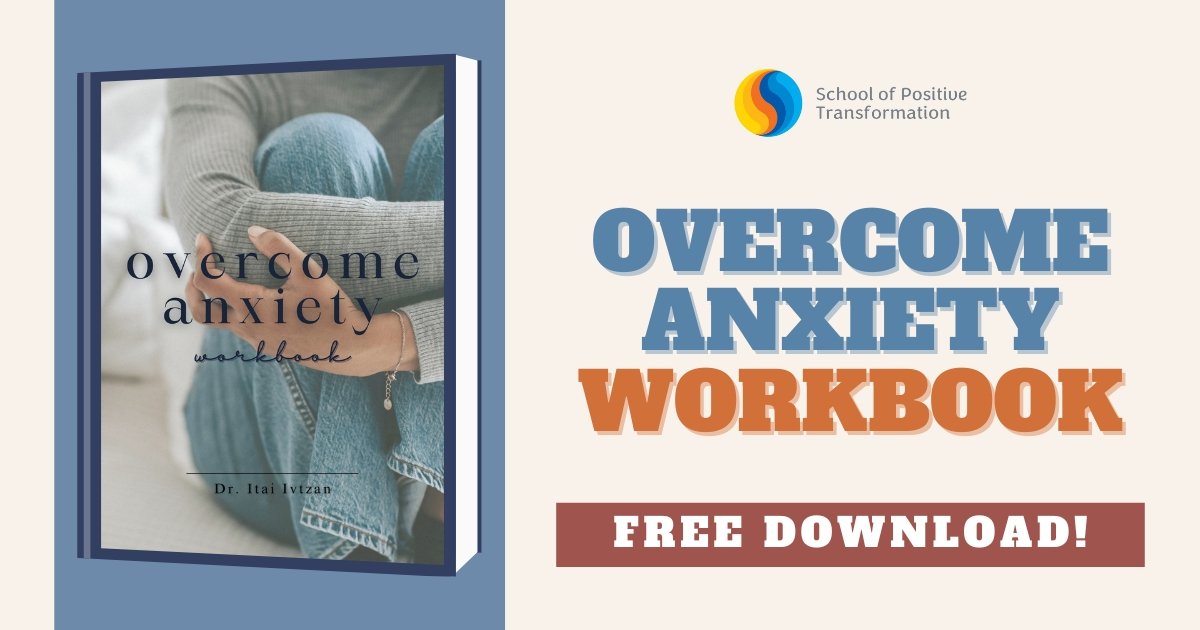Online Coach Certification—Conflict Management in the Workplace
 One of the best online coach certification that I have taken discussed greatly conflict management. Not only have I learned which skills contribute to resolution but I also learned about the different approaches that I may use.
One of the best online coach certification that I have taken discussed greatly conflict management. Not only have I learned which skills contribute to resolution but I also learned about the different approaches that I may use.
In this Article:
What is Conflict Management
Five Styles for Conflict Resolution
Conflict Management Skills
Tips for Managing Conflict
There was once an employee who was rumored to have bipolar disorder, she was head of the office and there are times that she’d act strange in her area, be so moody like one minute she’s laughing then another minute she’s angry at the assistants. She’s the head of the office for 5 years and no one stood up to her seemingly unproductive and sedentary leadership—until a newly hired came.
As a bright young employee, he felt like his superior is very inefficient and unproductive that he pointed it out to the unit manager. When the new employee stood up, others followed him and supported his claims. The manager has heard of these rumors but no one actually came to him up until now. All was in control until an incident happened. One employee was caught at the head’s office looking at her things trying to look for evidence of medication taken by the head.
The manager now was in a dilemma as the head accused the employee of invading her privacy. The manager listened to both sides of the story.
If you were the manager what would you have done?
But before you continue you might like to consider our free worksheet on exploring “Overcome Anxiety”. Please download this worksheet here.
What is Conflict Management?
Conflict management is also known as conflict resolution. It is about having a workplace that prevents conflict and having an able team that successfully manages, handles, and resolves workplace issues, disagreements, and miscommunications. Our certified coaching program has taught me that working professionally is not about avoiding conflict but rather about learning how to handle and resolve conflicts effectively respectfully and optimistically which creates the chance for growth and learning within an organization. Poor communication or interpersonal tension can easily cause simple disagreements to flare up into resentment or worse, this is the reason why employers are always on the lookout for prospective employees who can communicate, empathetically, and patiently, as these characteristics lead to favorable outcomes and keep professional relationships strong. Conflicts that are not dealt with the right actions may fester and grow and can ultimately reduce productivity and impair the team or employees’ morale. Conflict management is techniques and ideas designed to diminish the negative effects of conflict and improve the positive outcomes for all parties involved. The techniques and ideas used are specific for the kind of conflict at hand— conflict is usually differentiated as:
- between affective (relational)
- substantive (performance, process, or task-specific) conflict
- inter-organizational conflict (between two or more businesses)
- Intra organizational (conflict within organizations).
The aim of conflict management is conflict resolution— but just to emphasize, not all conflict management techniques and ideas may not always result in resolution.
Five Approaches for Conflict Resolution
There are different ways to respond to conflict, resolution strategies depend on your conflict style and conflict resolution skills. Some conflict approaches I learned from my online coaching certificate program may require a cooperative approach while some may need a passive or even a competitive approach.
Rahim (2002) identified, among the literature, five common management approaches to conflict resolution: integrating, obliging, dominating, avoiding, and compromising. Knowing the five styles of approaching conflict can help one understand how to tackle and diffuse the situation to reach an agreement to satisfy all parties.
There are five conflict resolution styles:
1. Avoiding the Conflict
This involves avoidance or withdrawing from conflict. It requires no stepping up or consideration for the other party. This is usually done by letting things pass up like pretending it never happened or existed. Examples of this are:
pretending there is nothing wrong,
- stonewalling
- or completely shutting down
2. Giving In
This involves cooperation and a little courage. Giving in or accommodating the other party means you agree to accommodate the other party by acknowledging and accepting his point of view or suggestion.
This is usually a style that involves letting the other party have their way. While this style can lead a way of making peace and moving forward, it can harbor feelings of resentment and oppression to the accommodator.
3. Standing your Ground
This requires courage and can be a bit inconsiderate for the other party. Most of the time this style is viewed as competing with the other party and making sure that you win the battle. This is a competitive style.
A competitive approach offers short term rewards, but in the long term effects can be detrimental to your business.
4. Compromising
This is one of the most sought approaches, but conflicts cannot always be resolved through compromise. Courage and consideration are needed when to be able to look for common ground.
The two parties agree to negotiate larger and more important points and forego the smaller/ less important points— this speeds up the resolution process. Although one has to be aware when a person compromises using passive-aggressive tactics as this may be a ruse to mislead.
5. Collaborating
Collaboration requires great courage and much consideration. This involves listening to both sides, discussing points of arrangement and objectives, and ensuring all parties understand each other. Collaboration requires thinking creatively to resolve the problem without taking advantage of the other. Collaborators are usually admired and well-respected.
Conflict Management Skills
Conflicts are impossible to avoid, therefore strong conflict management skills are an advantage. It is in humans’ nature to have disagreements, and these are healthy when approached correctly.
Eliminating conflict ENTIRELY can cause its own problems because when there is no diversity of opinion, there is no way to see and correct flawed plans and policies.
 My certified coaching program taught us that the following are some of the most important skills needed to help in conflict management
My certified coaching program taught us that the following are some of the most important skills needed to help in conflict management
-
Communication
Simple conflicts and misunderstandings can be avoided with clear, accurate written, and verbal communication.
This can be exercised through active listening as some people argue just because they want to feel heard. Simply being a good listener can be enough to inspire trust and resolve hurt feelings.
The following are other examples of good communication skills:
- Addressing Problems Swiftly
- Being aware of the reluctance of participants
- Formalizing Agreements
- Active Listening
- Sense of Initiative or Leadership
- Mediating Skills
- Organizing meeting with conflicting parties
- Modeling Sensible Dialogue
- Negotiating
- Nonverbal Communication
- Open Dialogue
- Addressing Conflict-Provoking Behaviors
- Teaching Positive Behaviors
- Great Written Communication
-
Emotional Intelligence
Emotional intelligence is considered as the ability to understand your feelings and those of others, and being able to handle those feelings well. People with high emotional intelligence are great at recognizing and addressing the needs of others while taking responsibility for their own needs and feelings.
The following are some of the ways to exhibit emotional intelligence:
- Adaptability
- Good Analytical Skills
- Emphasizing Feelings
- Compromising
- Showing Curiosity
- Forgiving Lapses
- Helping Others
- Identifying Triggers
- Recognizing Improvements
- Setting Ground Rules
- Showing Respect
- Modifying Behavior
- Being Motivated
- Being Optimistic
- Being Self-Aware
- Displaying Self-Regulation
-
Empathy
Empathy is the ability to know what others feel, the ability to see a situation from someone else’s viewpoint, and to understand their needs, motivations, and possible misunderstandings which is critical to effective conflict management.
Empathy is an ability that can be developed although some people are naturally more empathetic than others.
Empathy is best applied in a work environment when paired with critical thinking, emotional intelligence, and other types of discernment.
Hallmarks of empathy include:
- Accountability
- Asking for Feedback
- Building Trust
- Showing Compassion
- Embracing Diversity and Inclusion
- Giving Constructive Feedback
- Handling Difficult People
- Managing Emotions
- High Emotional Intelligence
- Identifying Nonverbal Cues
- Recognizing Differences
- Understanding Different Viewpoints
- Good Interpersonal Skills
- Ability to Recognize Problems
- Good Self-Control
- Ability to Embrace Different Opinions
-
Creative Problem Solving
Understanding and communication are all very well and good, but do not help much if you don’t have a solution for the underlying problem, whatever that problem may be.
Conflict often happens because no one can come up with a workable solution, so resolving the conflict depends on creating a solution.
That makes problem-solving an in-demand skill for employers. Examples of problem-solving conflicts in the workplace include:
- Conflict Analysis
- Brainstorming Solutions
- Collaborating
- Verbal Communication
- Convening Meetings
- Creativity
- Decision Making
- Designating Sanctions
- Nonverbal Communication
- Problem Solving
- Sense of Humor
- Goal Integration
- Monitoring Compliance
- Reconfiguring Relationships
- Fair Resolution
Tips for Managing Conflict
- Accept conflict. Since conflict is natural to every relationship, one must learn how to manage it as it is inevitable
Conflict may be a call for a need for change, a chance for growth, an opportunity for a different understanding, and improved communication. Conflict can not be resolved unless it is addressed to and with the appropriate individual(s).
- Be a calming agent. Regardless of whether you are going in between or dealing with your own conflict, your response to the conflict can escalate or decrease the intensity of the problem. To keep everything and everyone calm, provide an objective or neutral point of view. Support and think of a plan on how you are going to work with the other party to achieve resolution.
- Listen actively. Work through how you feel, what the specific problem is, and what impact it is having on you. Use -based statements to help do this (see formula below).
This simple formula from our certified coaching program is simple but very useful (you can try it!)
I feel ____________(strongest feeling) when you __________(objective description of the behavior). Because ______________ (specific impact or consequences). I would like ___________ (what you want the person to do in the future to prevent the problem)
- Analyze the conflict. This will help clarify the specific problem. Some questions that you may ask are:
- What triggered the conflict?
- Who are you angry with?
- What are you not getting that you want?
- What are you afraid of losing?
- Is your conflict/anger accurate or over-exaggerated?
- How can your conflict be resolved?
- Use neutral language. When people are in conflict they use inflammatory languages such as profanity, name-calling, and exaggerations that escalate the conflict. Restate inflammatory language in a more objective way to help make the information less emotionally laden and more useful for future discussions.
- Separate the person from the problem. One important thing I learned from my online coaching certificate program, was about how I should view the problem as a specific behavior or set of circumstances rather than attributing negative feelings to the whole person. This approach makes the problem more manageable and hopeful than deciding you “can’t stand” this person any longer.
- Work together. This requires that each person stop placing blame and take ownership of the problem. Commit to work together and listen to each other to solve the conflict.
- Agree to disagree. Each person has a unique point of view and rarely agrees on every detail. Being right is not what is important. When managing conflict, seeking the “truth” can trap you rather than set you free. For example, consider the differing testimony of witnesses that all see the same car accident. Truth is relative to the person’s point of view.
- Focus on the future. In conflict, we tend to remember every single thing that ever bothered us about that person. People in conflict need to vent about the past but they often dwell on the past. Often the best way to take ownership of the problem is to recognize that regardless of the past, you need to create a plan to address the present conflict and those that may arise in the future.
- “Move past positions.” A position is the desired outcome of a conflict. Often the position is “I need a new roommate” or “This person is impossible to live with.” Positions are not negotiable and result in an impasse. To resolve conflict, each person has to “move past positions.”
- Share your interests. To solve an interpersonal conflict, all parties must talk about their interests or the WHYs behind their positions. They must share their true interests and work together to find a solution that satisfies those interests. Common interests for students are to sleep, study, entertain, and relax in a comfortable atmosphere. Often their interests are more intangible such as respect, belonging, friendship, and fun. When individuals have differing lifestyles, values, and schedules the need to discuss their differences is critical in managing conflict. You must develop a balanced plan of giving and take that satisfies everyone’s interests.
- Be creative. Finding a resolution to the problem that satisfies everyone requires creativity and hard work. Be careful not to give in simply to avoid conflict or maintain harmony. Agreements reached too early usually do not last. Generate silly options to begin thinking “outside of the box” of original positions.
- Be specific. When problem-solving be very specific. For example, if you are using a roommate agreement to facilitate the discussion make sure that everyone fully understands each point that is written down. Clarify ambiguous terms that each person may interpret differently.
- Maintain confidentiality. Encourage others who are in conflict to deal directly with the person they are in conflict with. Avoiding the conflict and venting to others tends to escalate the conflict and fuels the rumor mill. If rumors are already part of the conflict, encourage them to work out a plan to put an end to the gossip. Do your part to quell rumors.
 Early in this article, we related a real story of the conflict in the workplace.
Early in this article, we related a real story of the conflict in the workplace.
The question is what did the manager do?
First: The manager eagerly listened to both sides of the story.
Second: As their workplace is not discriminant to people with mental health problems, he explained to the employee that it is not his right to divulge personal information that is not his or something that wasn’t shared publicly by the unit head. Although he reprimanded the employee by taking actions on her own, he said that she may need to apologize to the head for her actions but to not mention the real motive behind it as it is discriminatory. But he promised to take action about the sedentary and unproductive leadership of the head.
He also spoke to the unit head and explained that the head should hear the apology of the employee as he vouches for the employee’s good character.
Third: His actions about the matter came out two months after. Their HR came to the unit office and related that there is a new organizational strategy by the company. All board licensed professionals were to be rotated in the unit head position for additional professional growth and experience for them all.
The HR also made them take psychological tests and interview as their unit is supposed to be the advocate for mental health, and it is very important to have them kept in check too.
This resolved and boosted the productivity and creativity of those in the unit. They understood the strong points of each leadership style and the employees finally resolved the tension around their previous unit head.
An online coach certification program can be beneficial for managers and those who are most likely to handle conflicts within and even outside the company.
Are you ready to enhance your conflict management skills and elevate your leadership capabilities? Download our “Overcome Anxiety Workbook” for free here and start mastering the techniques that can transform your workplace dynamics and personal growth today!







